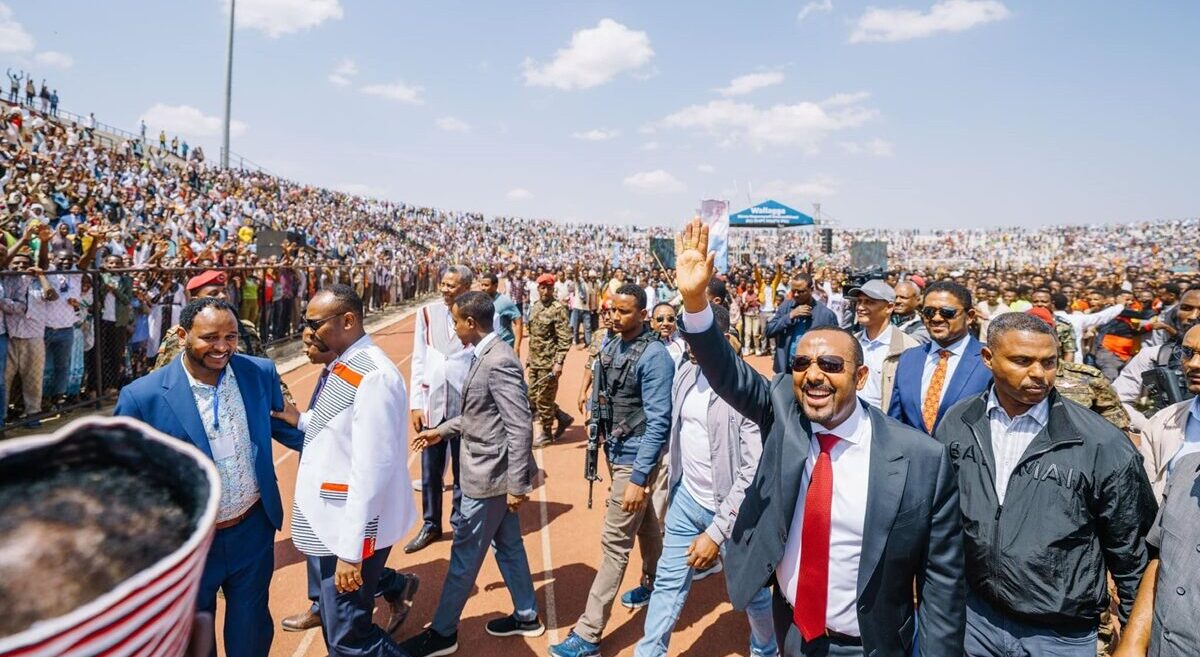News Analysis: Humanitarian assistance ‘not enough’ to meet the increasing number of IDPs in North, South Wollo Zones of Amhara Region

Photo: Dessie City Administration Communication Bureau
By Getahun Tsegaye @GetahunTsegay12 & Mahlet Fasil @MahletFasil
Addis Abeba, September 22/2021– Abebe Gebremeskel, the mayor of Dessie City told Addis Standard that more than 270,000 internally displaced people (IDPs) settled in Dessie City fleeing the ongoing conflict that spilled into the Amhara region after the withdrawal of Ethiopian National Defense Forces (ENDF) from the Tigray region in June. The Amhara Regional State’s Fundraising Committee also stated that not collecting enough resources to meet the needs of the IDPs
According to the mayor of Dessie city, the number of people who fled the ongoing fighting in North Wollo Zone is estimated to be between 270, 000 and 300,000. He explained that the huge influx could inhibit collecting comprehensive data.
Abebe told Addis Standard that the IDPs were temporarily sheltered in Thirteen schools in Dessie city. He explained that the government provided 17,000 quintals of food for 118,000 IDPs. “NGOs, especially the Organization for Rehabilitation and Development Agency in Amhara region, on the other hand, supplied food aids for almost 60, 000 people,” the mayor said.
According to the mayor, almost 178, 000 IDPs have received aid so far. “We have enough food in stock but transportation has been a problem to address the issue,” he said. He explained that Two woredas of South Wollo and 21 woredas of North Wollo where 1.8 million people reside are vulnerable to the consequences of the conflict. Abebe disclosed that highly affected areas were identified and the government was working with other entities, including the Ethiopian Red Cross Society, to deliver necessary aid.
Shortage of Food
Answering the question whether or not a famine has occurred in Wollo , Abebe said that the areas in North Wollo where armed forces took control of might experience such famine but he wasn’t sure if it really happened or not. He accused TPLF of looting and displacing the residents in those areas which, according to him, leads to starvation. “We had a meeting with the Ethiopian National Disaster Risk Management Commission on the issue of facilitating aid to war affected people in North Wollo, “he said.
He then detailed, “We do not have any evidence that indicates the starvation caused any death. There has not been any death record in relation to famine or starvation. All the death tolls are from the attack from TPLF.”
“We do not have any evidence that indicates the starvation caused any death. There has not been any death record in relation to famine or starvation. All the death tolls are from the attack from TPLF.”
Abebe Gebremeskel, the mayor of Dessie City
Semira Seid , who is a volunteer aid facilitator in Dessie City, told Addis Standard that the number of people who faced humanitarian crises in Wollo would be more than 500, 000 of which most of them are sheltered in different schools in Dessie city. According to Semira, the majority of the vulnerable ones were women and children. “The government has provided little aid. Individuals, volunteers, and the diaspora community are helping but it is not enough to address the magnitude of the crisis.” Semira stated that women were giving birth in the woods away from health facilities. She explained that the majority of the IDPs were from North Wollo, especially from Raya, Alamata, Hara, Woldiya, Mersa, and Lalibela. “With the exception of two woredas, most of the North Wollo areas have encountered grave humanitarian crises,” Semira explained to Addis Standard.
“The government has provided little aid. Individuals, volunteers, and the diaspora community are helping but it is not enough to address the magnitude of the crisis.”
Semira Seid , Volunteer aid facilitator
Corroborating Semira, the South Wollo zonal disaster prevention and food security office, on the other hand, said, via Dessie City Administration Communication official facebook page, it was supporting more than 254,000 IDPs in Dessie. The head of the office, Mesay Maru stated that more than 350,000 quintals of daily humanitarian aid were provided. He said the IDPs were from Korem, Ofla and various woredas of North Wollo, South Wollo, and Afar region.
“14 schools in Dessie and 8 in Kombolcha have been designated as temporary shelters for IDPs,” Mesay said. He noted that although basic humanitarian assistance is being provided, there is a shortage of edible oil. He called on all Ethiopians and aid agencies to provide humanitarian assistance to save the lives of the displaced.
The UN World Food Program (WFP) says, “Conflict is forcing 1.7 million people in Afar and Amhara into a hunger crisis WFP is expanding its operations, but we need additional funding to reach millions across Northern Ethiopian with lifesaving food.” Additionally, BBC English quoted WFP as saying “At this point we have no evidence of famine in North Wollo.” It added quoting WFP, “[But] as the offensive continues and large areas remain inaccessible due to active fighting, food insecurity in this zone is serious.”
The destruction of School infrastructures
The Amhara regional education bureau head, doctor Yilkal Kefale disclosed information in relation to the impacts of the ongoing war in Amhara region saying, “About one million students in the Amhara region will not be able to attend school in the 2021 academic year,” the head of the regional education bureau, Yilkal Kefale (PhD) told Ethiopian Insider.
Yilkal stated that the fighting in the Amhara region caused the destruction of many schools which forced students to drop out of school. He blamed what he called “invaders” from the Tigray for the destruction of the schools.
Yilkal accused them of looting and destroying educational institutions. He cited damage in areas of the Amhara region that were under the control of TPLF but now are freed as evidence to his claim.
“According to information gathered so far, 268 schools in the rebel-held areas have been severely damaged”, Yilikal said. He added that more than a thousand schools had been partially damaged. The Ministry of Education, on its part, announced that it has provided 100 million birr to repair damaged schools in the state.
What is being done?
The Amhara Regional State’s Fundraising Committee said in a discussion held on September 21, 2021 that it was not collecting enough resources to meet the needs of the IDPs. “Despite the good performance of government employees, the amount of money collected from traders, rural and urban residents is not enough for the survival campaign,” he said.
The Amhara Regional State’s Deputy Chief of Staff Doctor Fanta Mandefro called on citizens to support and rehabilitate the security forces who are sacrificing their lives at the battle fronts and to IDPs.
Speaking on the occasion, the deputy head of the Amhara Regional State Trade and Market Development Bureau, Abebaw Wube, said revenue has been collected from various sections of the society at the state level.”The collection, however, was not as expected to address the level of the crises,” he said.
Following the unilateral ceasefire by the federal government, armed forces affiliated with the TPLF advanced towards the Amhara and Afar regional governments which instigated more violence and humanitarian crises. Though the cost of the war is yet to be investigated to determine the magnitude of the damage, the estimated number of people who fled the ongoing fighting in North Wollo Zone at the beginning of August which was between 10,000 and 15,000 has now reached 270, 000 and 300,000. AS




